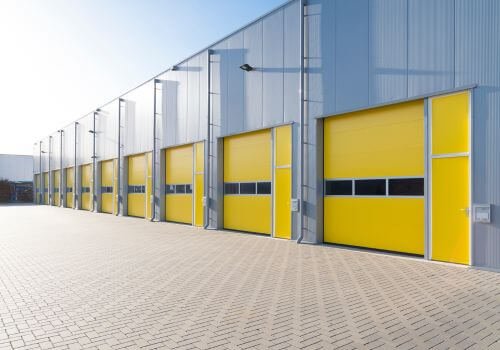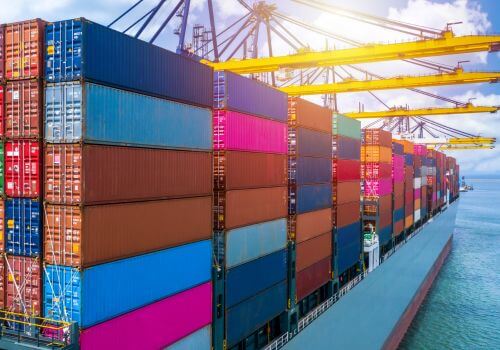Logistics is a complex and dynamic field that involves moving goods efficiently from one point to another. While the goal is always to ensure smooth operations, challenges and discrepancies often arise. One of the most common issues in logistics is OS&D, which stands for Overages, Shortages, and Damages. If you’re new to the logistics world, understanding OS&D is crucial because it directly impacts customer satisfaction, operational efficiency, and profitability.
This guide will break down everything you need to know about OS&D in logistics in a simple, easy-to-understand way. By the end of this article, you’ll have a solid grasp of what OS&D is, why it happens, how to handle it, and how to prevent it.
What is OS&D in logistics?
OS&D stands for Overages, Shortages, and Damages—three types of discrepancies that occur during the transportation or delivery of goods. Here’s what each term means:
- Overages: When more goods are delivered than were ordered or expected.
- Shortages: When fewer goods are delivered than were ordered or expected.
- Damages: When goods arrive in a damaged or unusable condition.
These discrepancies can happen at any point in the supply chain—during loading, transit, unloading, or storage. They are typically documented on an OS&D report, which helps identify and resolve the issue.
Why does OS&D happen?
OS&D issues can arise for a variety of reasons. Understanding these causes is the first step toward addressing and preventing them. Here are some common reasons why overages, shortages, and damages occur:
1. Human errors
- Incorrect picking or packing of items at the warehouse.
- Mislabeling of products or shipping documents.
- Mistakes during loading or unloading.
2. Transportation issues
- Poor handling of goods by drivers or carriers.
- Accidents during transit.
- Delays that lead to spoilage (for perishable goods).
3. Packaging problems
- Inadequate or improper packaging that fails to protect items during transit.
- Use of low-quality materials that can’t withstand handling.
4. Inventory discrepancies
- Errors in stock counts at the warehouse.
- Outdated inventory systems leading to incorrect shipments.
5. External factors
- Weather conditions causing delays or damage.
- Theft or tampering during transit.
- Customs or regulatory issues for international shipments.
What are the impacts of OS&D on logistics?
OS&D issues may seem like minor inconveniences at first glance, but they can have significant consequences for businesses if not handled properly. Here’s how they can affect logistics operations:
Customer dissatisfaction
When customers receive incorrect or damaged orders, it can lead to frustration and loss of trust in your business. Repeat issues may result in losing valuable clients.
Increased costs
OS&D often leads to additional expenses such as:
- Replacing damaged or missing goods.
- Paying penalties for late deliveries.
- Administrative costs associated with investigating and resolving discrepancies.
Operational delays
Resolving OS&D issues takes time and resources, which can disrupt your supply chain operations and delay future shipments.
Reputation damage
Frequent OS&D problems can harm your company’s reputation in the market, making it harder to attract new customers or retain existing ones.
5 steps to handling OS&D issues in the logistics sector
When OS&D occurs, it’s important to address it promptly and effectively to minimize its impact. Here’s a step-by-step guide on how to handle these situations:
Step 1: Document the issue
The first step is to create an OS&D report as soon as a discrepancy is identified. This report should include:
- A detailed description of the issue (overage, shortage, or damage).
- Photos of any damaged goods (if applicable).
- Information about the shipment (order number, delivery date, carrier details).
- Names of individuals involved (e.g., driver, receiver).
Step 2: Notify relevant parties
Inform all relevant stakeholders about the issue immediately. This may include:
- The shipper or supplier.
- The carrier or transportation company.
- Your internal logistics team.
Timely communication ensures that everyone is aware of the problem and can work together on a resolution.
Step 3: Investigate the cause
Determine what caused the discrepancy by reviewing:
- Shipping documents (e.g., bills of lading).
- Inventory records from the warehouse.
- Handling procedures during loading/unloading.
This investigation will help you identify whether the issue was due to human error, transportation mishandling, or another factor.
Step 4: Resolve the issue
Depending on the nature of the problem, take appropriate corrective actions:
- For overages: Decide whether to return the extra items or keep them (with approval from the supplier).
- For shortages: Arrange for replacement items to be shipped as soon as possible.
- For damages: File a claim with the carrier if they are responsible for the damage.
Step 5: Implement preventative measures
Once the issue has been resolved, take steps to prevent similar problems in the future (more on this below).
4 real-life examples of OS&D scenarios
To better understand how OS&D issues manifest in day-to-day logistics operations, let’s explore some practical examples.
1. The missing smartphones
A major electronics retailer places an order for 1,000 smartphones from their supplier. Upon delivery, the receiving team discovers that only 985 units are present in the shipment. This is a classic example of a shortage.
What happens next:
- The retailer immediately documents the discrepancy on an OS&D report.
- They notify the supplier about the shortage.
- The supplier checks their warehouse records and confirms the error.
- The missing 15 smartphones are expedited in a separate shipment.
- Both parties review their processes to prevent future shortages.
2. The crushed ceramics
A high-end homeware store orders a shipment of delicate ceramic vases. When the shipment arrives, the store manager notices that several boxes are visibly damaged. Upon inspection, they find that about 20% of the vases are cracked or shattered. This is a clear case of damage.
What happens next:
- The store manager thoroughly documents the damage with photos and descriptions.
- They refuse to accept the damaged items and note this on the delivery receipt.
- An OS&D report is filed with the shipping company.
- The carrier investigates the cause of damage (improper handling during transit).
- A claim is filed, and the carrier agrees to cover the cost of the damaged goods.
- The supplier sends a replacement shipment with improved packaging.
3. The surplus sneakers
A footwear distributor receives their regular shipment of sneakers from a manufacturer. While checking the inventory, they realize they’ve received an extra box containing 50 pairs of premium running shoes. This is an example of an overage.
What happens next:
- The distributor creates an OS&D report detailing the extra merchandise.
- They contact the manufacturer to report the overage.
- After investigating, the manufacturer realizes it was a picking error on their end.
- Given the good relationship between the companies and the distributor’s consistent sales, they agree to let the distributor keep the extra shoes at a discounted rate.
- Both parties update their inventory systems to reflect the change.
4. The temperature-sensitive mishap
A pharmaceutical company ships a batch of temperature-sensitive vaccines to a hospital. During transit, the refrigeration unit in the truck malfunctions, causing the temperature to rise above the safe threshold. This results in both a shortage (as the entire batch is unusable) and potential damage.
What happens next:
- The driver notices the malfunction and immediately reports it.
- Upon delivery, the hospital refuses the shipment due to safety concerns.
- An OS&D report is filed, documenting the temperature deviation.
- The pharmaceutical company initiates an investigation into the cause of the refrigeration failure.
- A new batch of vaccines is expedited to the hospital.
- The shipping company reviews its equipment maintenance procedures to prevent future incidents.
These real-life scenarios illustrate how OS&D issues can occur in various ways across different industries. They also demonstrate the importance of quick action, clear communication, and systematic problem-solving in managing these challenges effectively.
In summary, OS&D in logistics refers to Overages, Shortages, and Damages – discrepancies that occur when the quantity or condition of goods received doesn’t match what was ordered or expected.







